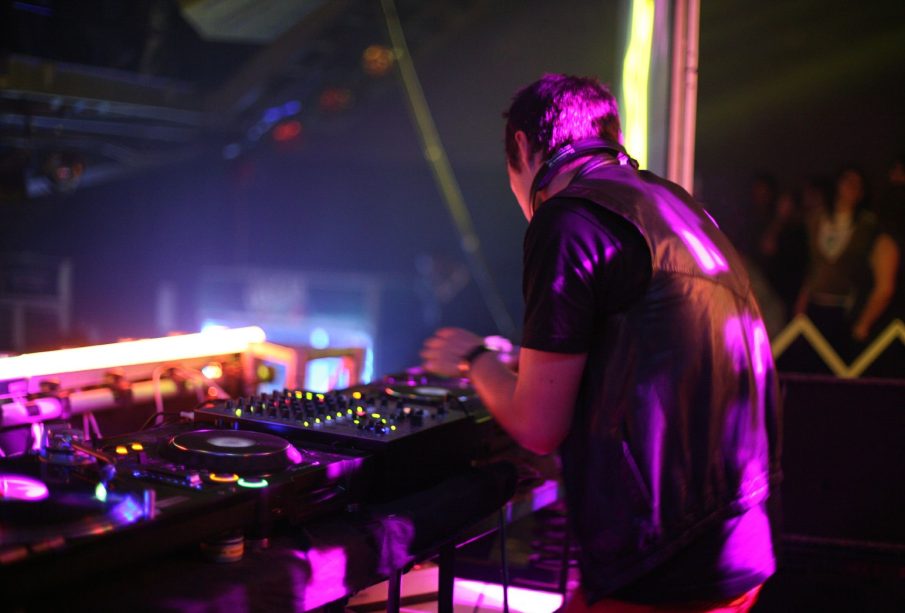Virtual DJ vs. Traditional DJ: Comparing the Two Approaches to Mixing Music

Introduction
The art of DJing, which involves seamlessly blending tracks to create a continuous flow of music, has evolved significantly over the years. With the advent of technology, DJs now have two primary approaches to mixing music: the traditional method, which relies on physical equipment like turntables and mixers, and the virtual method, which utilizes software and digital controllers. This article aims to explore the differences between these two approaches, highlighting their respective advantages, disadvantages, and impact on the DJing landscape.
Traditional DJing: The Legacy of Vinyl and Turntables
Traditional DJing traces its roots back to the early days of club culture when DJs utilized vinyl records and turntables to mix tracks. It became a skill that required precise timing, sharp hearing, and an excellent ear for beatmatching. Here are some key aspects of traditional DJing:
- Tangible Experience: DJs using vinyl records can physically touch and manipulate the records, providing a tactile connection to the music and a unique sense of control.
- Beatmatching Skill: One of the most critical skills for traditional DJs is beatmatching, where they align the beats of two tracks manually. This process demands a sharp ear and extensive practice to achieve seamless transitions.
- Limited Track Selection: Traditional DJs had to carry physical records to events, limiting the number of tracks they could play in a set.
- Nostalgic Appeal: Vinyl enthusiasts and purists appreciate the warm sound quality and nostalgic value of traditional DJ setups.
Virtual DJing: The Digital Revolution in Mixing Music
With technological advancements, virtual DJing emerged as a more accessible and versatile alternative to traditional methods. Virtual DJing employs software, digital controllers, and computers, allowing DJs to manipulate music digitally. Here are some notable features of virtual DJing:
- Extensive Track Library: virtual djs can carry vast music libraries on laptops or external storage, offering an almost unlimited selection of tracks to choose from during performances.
- Sync Functionality: Many virtual DJ software programs offer an automatic beatmatching feature, making it easier for DJs to sync tracks seamlessly.
- Enhanced Effects and Creativity: Digital platforms provide a wide range of effects and tools that allow DJs to experiment and enhance their performances creatively.
- Portability and Convenience: Virtual setups are lightweight and highly portable, reducing the need for physical storage and making it easier for DJs to travel.
Advantages and Disadvantages of Each Approach
- Advantages of Traditional DJing:
- Authentic Experience: Traditional DJing offers a tangible and authentic experience, with physical interaction with records and equipment.
- Skill Development: Learning traditional DJing hones essential skills like beatmatching and precise handling of vinyl, building a deeper understanding of music manipulation.
iii. Nostalgic Appeal: Traditional setups evoke a sense of nostalgia, attracting enthusiasts who appreciate the vintage aesthetics and sound quality.
- Disadvantages of Traditional DJing:
- Limited Track Selection: DJs have to carry physical records, restricting the number of tracks they can access during performances.
- Cost and Maintenance: Collecting vinyl records and maintaining turntables can be expensive and time-consuming.
- Advantages of Virtual DJing:
- Vast Music Library: DJs can access an extensive digital library of tracks, expanding their options and creativity during performances.
- Convenience and Portability: Virtual setups are lightweight and easy to transport, making them ideal for gigging and traveling DJs.
iii. Enhanced Creativity: Virtual DJing platforms offer a wide array of effects and tools, enabling DJs to experiment and elevate their performances.
- Disadvantages of Virtual DJing:
- Reduced Tactile Experience: Virtual DJing lacks the tactile feedback of vinyl manipulation, leading to a different experience for the DJ and audience.
- Overreliance on Technology: DJs may become overly dependent on automatic features like beat syncing, potentially hindering the development of essential DJing skills.
Impact on the DJing Landscape
The rise of virtual DJing has significantly impacted the DJing landscape, altering the way DJs approach their craft and the audience’s expectations. While traditional DJing retains a devoted following of purists and vinyl enthusiasts, virtual DJing has democratized the art form, making it more accessible to aspiring DJs. The debate between these two approaches often sparks conversations about the authenticity and artistic merit of each style.
Conclusion
The choice between virtual DJing and traditional DJing ultimately depends on individual preferences, artistic goals, and the audience’s preferences. Traditional DJing offers a genuine and tactile experience with vinyl manipulation, while virtual DJing provides an expansive music library and numerous creative possibilities. As technology continues to evolve, we can expect both approaches to coexist in the DJing world, enriching the diversity and innovation of this dynamic and ever-evolving art form.
Leave a reply
You must be logged in to post a comment.







